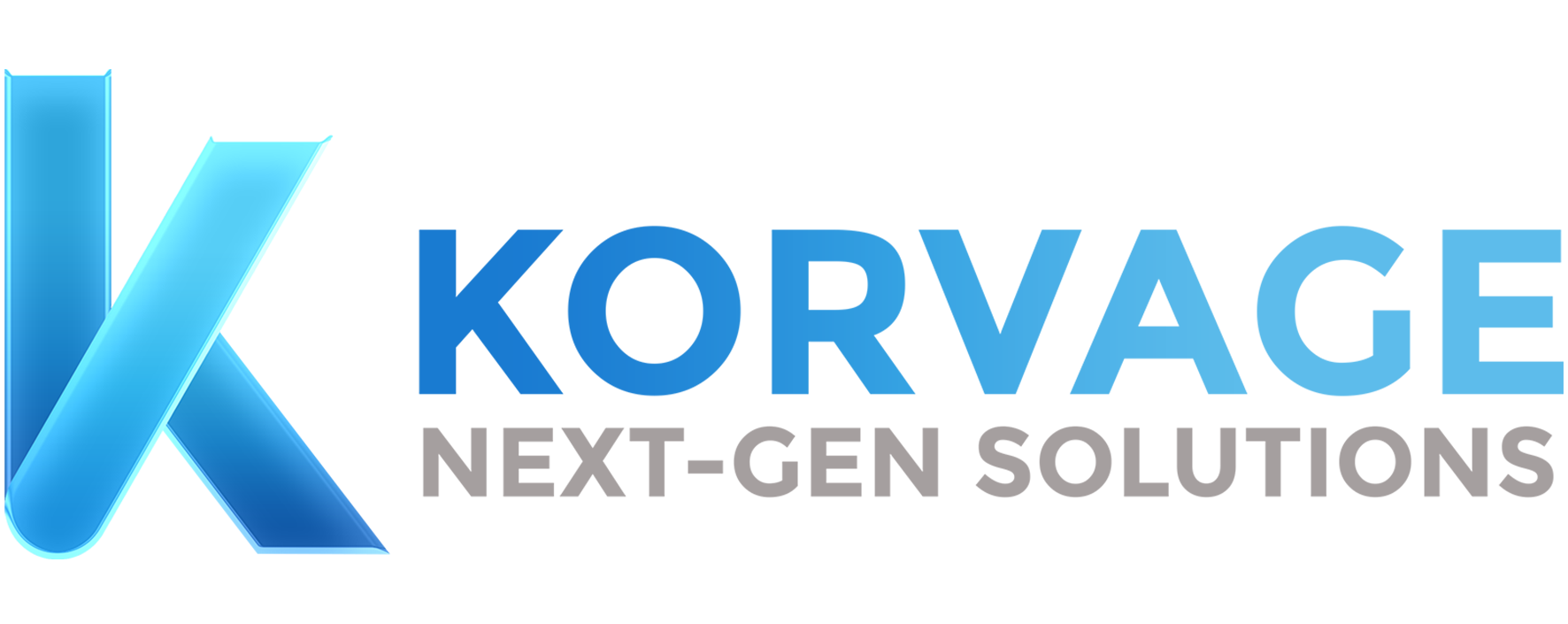All About Enterprise Asset Management Software
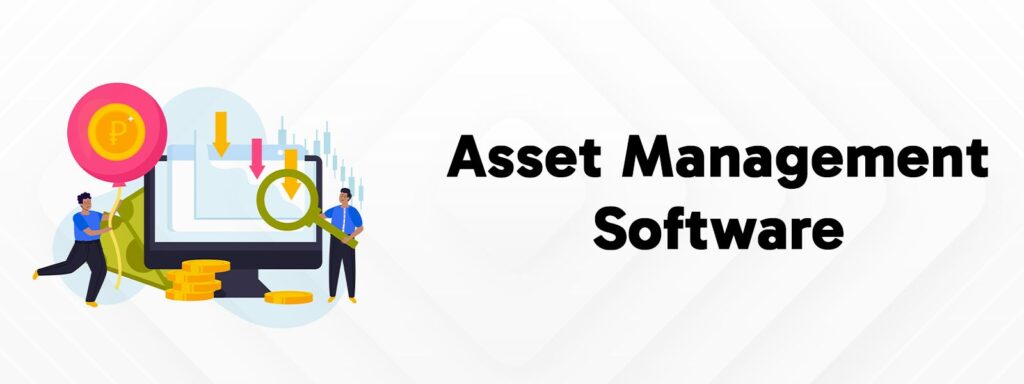
Assets play a huge role in the company from invading taxes to making our work easier. They have their place. In big companies, top management employs some people specifically to keep track of their assets who maintain tons of spreadsheets and documents. However, this process is time-consuming & creates confusion at times but the technology has evolved a lot over the time & no such things are needed now as the need for manual work is slowly becoming extinct with the help of AI & automation. To tackle this issue we have asset management software to keep a track on our physical & digital assets.
How Does Enterprise Asset Management Software Work?
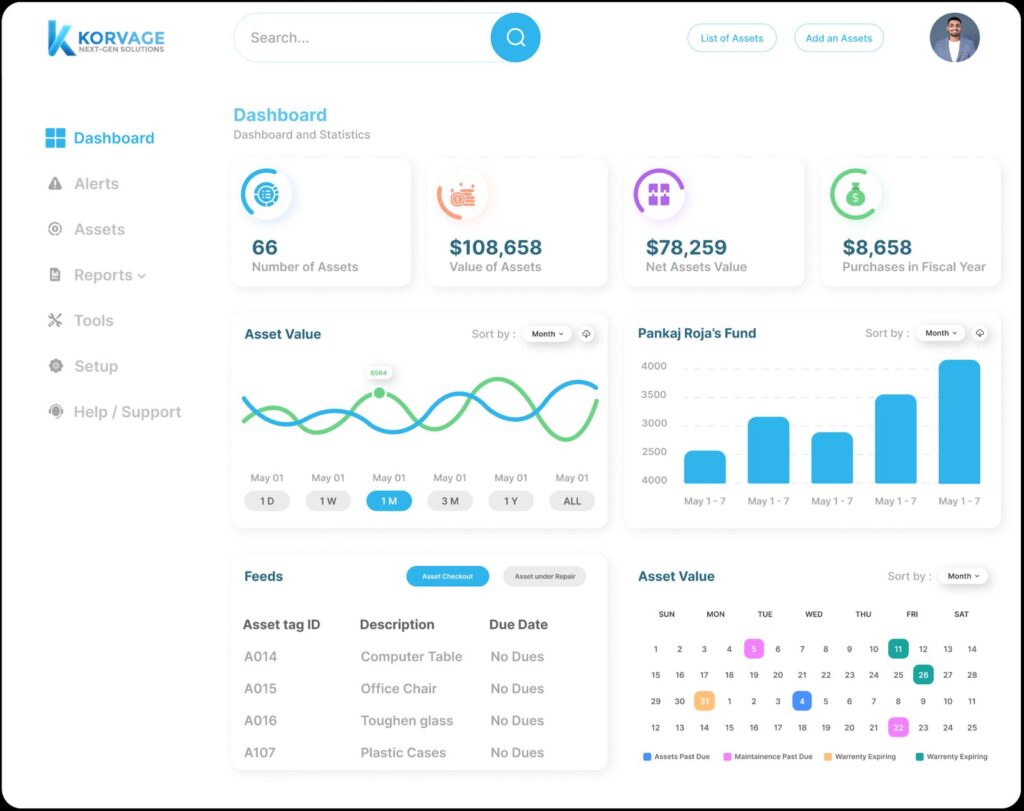
Experts predict that the market of asset management software is expected to grow by $27 Billion by 2025 this shows the importance of inventory management software in the upcoming years. Understanding the work of Inventory Management Software is crucial for businesses to control their stock effectively, save money, and work more efficiently.
Inventory Management involves overseeing goods from buying to storing to selling or using them. The main aim is to have enough stock to meet the demand and avoid having an overstock stock situation.
- Consolidates Information – Inventory Management Software has a central place where all inventory information is kept. This includes details about products, how many there are, where they are, and where they’ve been.
- Barcode Scanning – These systems often use barcode scanning and radio frequency identification tags. Each product gets a unique code so it can be tracked easily. When items are received, moved or sold they get scanned and the system gets real-time updates.
- Automated Entry & Updates – This Software automates updating stock levels. This means whenever something is bought or sold the system gets updated automatically, avoiding mistakes from manual entry.
- Demand Forecasting – These systems use clever maths to predict future demand. They look at past sales, market trends and other information to help businesses plan and avoid running out or having overstock.
- Order Optimization – Inventory Management Software helps decide when to reorder items. It looks at past orders, how long it takes items to arrive, and how much stock is on hand to make sure orders happen at the right time and in the right amounts.
- Integration with Other Systems – Inventory management Software often links up with other business systems like accounting or other CRMs which helps in keeping all the info in one place and makes it easier to make smart decisions.
- Reporting and Analytics – These systems provide reports on things like how much stock there is, how quickly it’s selling, and how accurate orders are. This helps businesses make better choices about their inventory.
Importance of Asset Management?
As per research, around 43% of businesses fail to track their assets efficiently which increases the expense on maintenance. Asset management is essential for businesses to track, maintain, and utilize their resources effectively. It helps in ensuring optimal allocation of resources & reducing costs by preventing downtime. It also enhances productivity by ensuring equipment availability.
Imagine juggling blindfolded. That’s what managing assets without a system feels like. Asset management brings clarity and control, guiding your resources effectively. It tracks location, condition, and usage, prevents loss and maximizes benefits. By managing assets efficiently, businesses can improve operational efficiency, minimize risks and align resources with their organizational goals. Proper management of assets also helps in complying with regulatory compliances, minimizing risks and strategic decision-making.
Top Features of Enterprise Asset Management Software
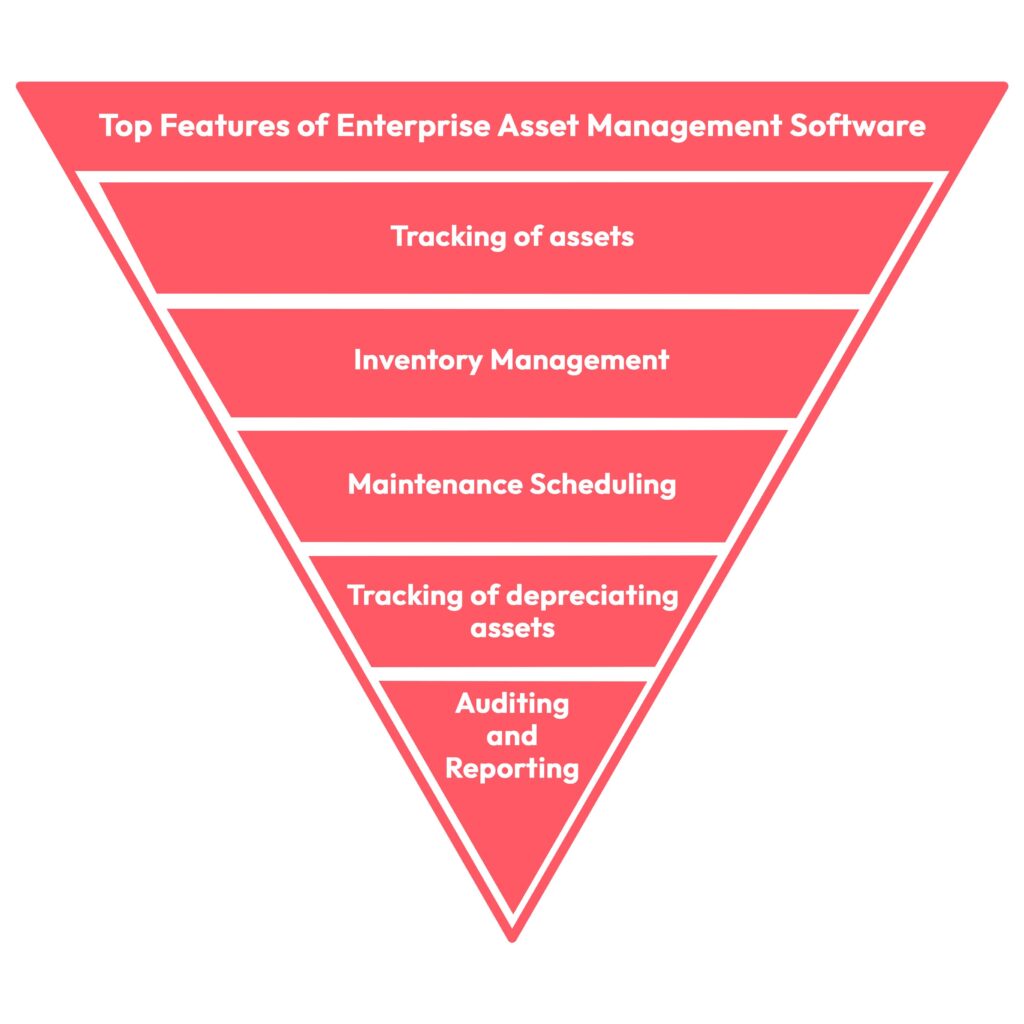
Asset management software helps businesses track, monitor and manage their assets such as equipment, machinery, vehicles & digital assets like software license’s and patents easily. Here are some key features of asset management software:
- Tracking of assets – One of the prominent features of this software is its ability to track assets throughout their lifecycle which allows users to record important information such as location, condition, maintenance history, and usage patterns. Moreover, this feature helps businesses to keep a check on their assets which furthermore reduces the risk of loss or theft.
- Inventory Management – This software comes with some pre-installed inventory management capabilities which enable the users to keep track of their stock levels, reorder supplies when necessary and prevent stock-out situations. Additionally, It also streamlines the procurement process by providing insights about inventory levels and usage trends to ensure optimal inventory levels.
- Maintenance Scheduling – Effective maintenance is essential to increase the lifespan of assets and prevent unexpected breakdowns. This software allows users to schedule preventive maintenance tasks based on usage patterns at predefined intervals. It sends reminders for upcoming maintenance tasks, helping businesses stay updated about their maintenance schedules and minimize asset downtime.
- Tracking of depreciating assets – Assets depreciate over time, which impacts their resale value. This software automatically tracks the depreciation value of assets accurately which makes it easier for businesses to calculate the remaining value of assets and make informed financial decisions. This feature is particularly useful for accounting purposes and ensures compliance with regulatory requirements.
- Auditing and Reporting – This software simplifies the auditing process by providing tools to conduct regular asset audits efficiently. It generates detailed reports on asset status, location, and other relevant metrics, facilitating compliance audits and internal audits. These reports provide valuable insights about asset utilization and performance, enabling businesses to optimize asset allocation & identify areas for improvement.
Benefits of Enterprise Asset Management Software
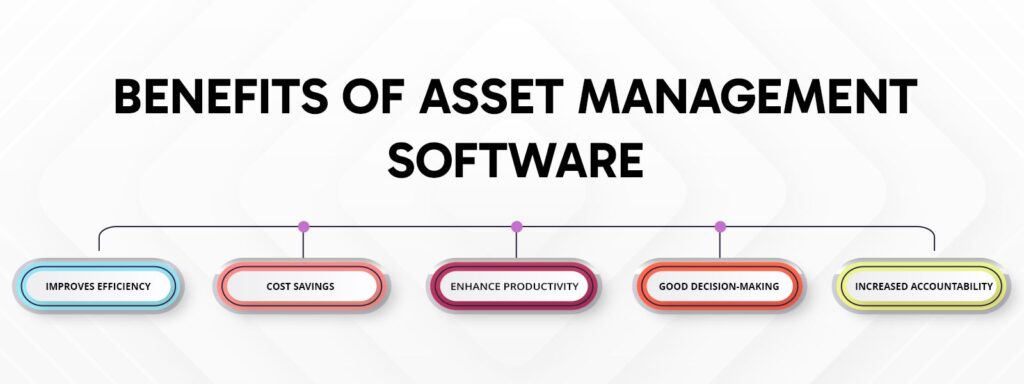
- Improves Efficiency – Asset management software helps in streamlining the process by providing a centralized platform for tracking and managing assets. This reduces the time and effort required to locate assets, perform maintenance and handle asset-related tasks.
- Cost Savings – By effectively managing assets, organizations can avoid unnecessary purchases and extend the lifespan of existing assets through proactive maintenance scheduling. This leads to cost savings in terms of reduced spending on new assets and decreased maintenance expenses.
- Enhance Productivity – With asset management software, employees can quickly locate the assets they need, reducing downtime and improving productivity. Additionally, automated workflows and reminders ensure that we complete maintenance tasks promptly which further enhances productivity.
- Good Decision-Making – Inventory management software also provides valuable insights about asset utilization, performance and lifecycle costs through reporting and analytics. This data enables informed decision-making regarding asset investments & replacements.
- Increased Accountability – This also assigns ownership and responsibility for assets, ensuring accountability throughout their lifecycle. This promotes proper asset usage, maintenance, and timely reporting of issues, fostering a culture of accountability within the organization.
Conclusion –
In conclusion, effective asset management through enterprise asset management software by Korvage can be a strategic move for businesses to improve their efficiency, minimize error & enhance productivity.
